Abstract
1. The discharge properties of human muscle spindles have been studied in vitro in a preparation based on the biopsied external intercostal muscle. 2. The static and dynamic responsiveness of thirty-six endings in twenty visualized and histologically identified spindles have been investigated using amplitudes and velocities of stretch likely to encompass those occurring in vivo. 3. The dynamic index, measured at a stretch velocity of 3 mm/sec, ranged from 3 to 40 impulses/sec and was distributed bimodally, consitent with the presence of primary and secondary endings. 4. The relationship between the dynamic index and the velocity of stretch was approximately linear both for primary and secondary endings up to the maximum velocity tested (10 mm/sec). 5. The frequency/extension relationship was approximately linear for both primary and secondary endings. The mean values of the slope for primary and secondary endings were 16-1 +/- 8-3 S.D. of the observation and 12-1 +/- 6-5 impulses/sec per five per cent extension. 6. The slopes of the frequency/extension relationship for endings lying in the same spindle were positively correlated, significant at the 10% level. 7. It was estimated from the results in vitro that the position sensitivity of human intercostal spindles in vivo ranges from 2 to 21 impulses/sec per millimetre.
Full text
PDF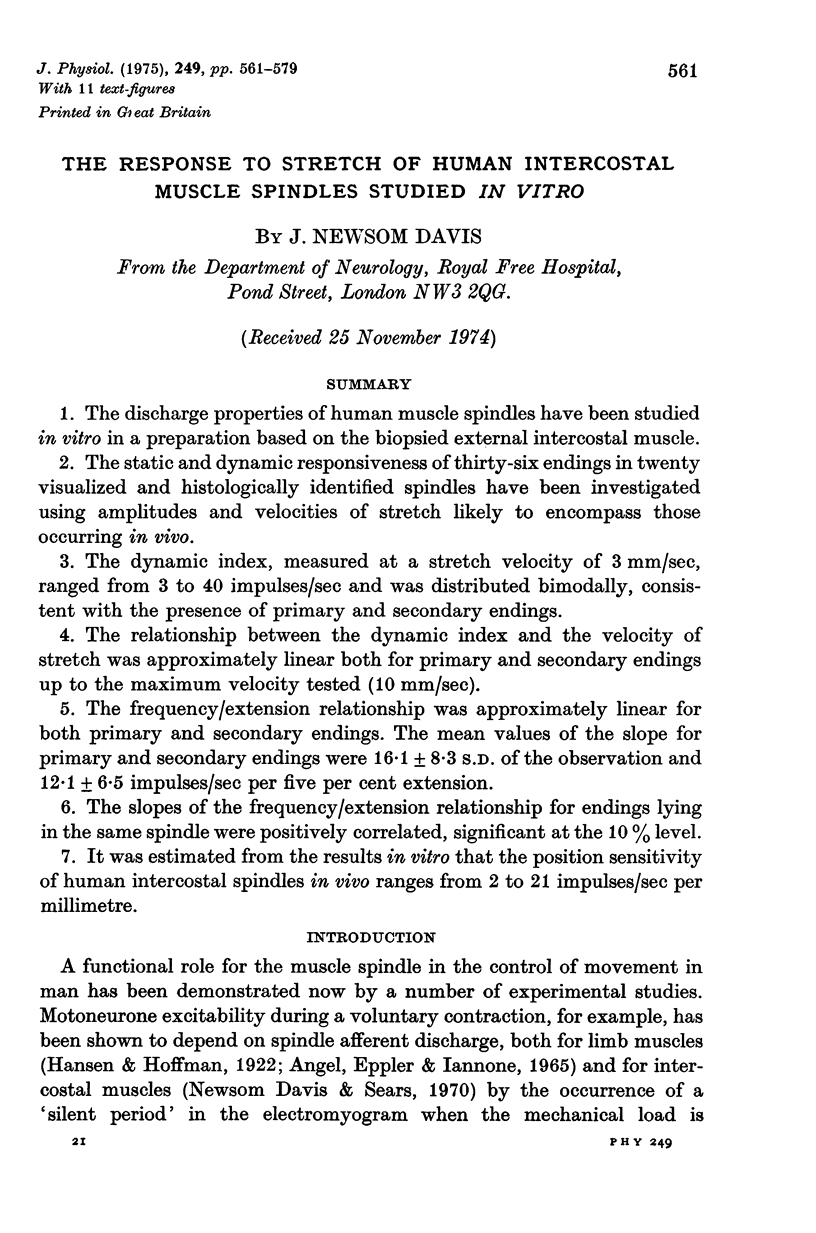
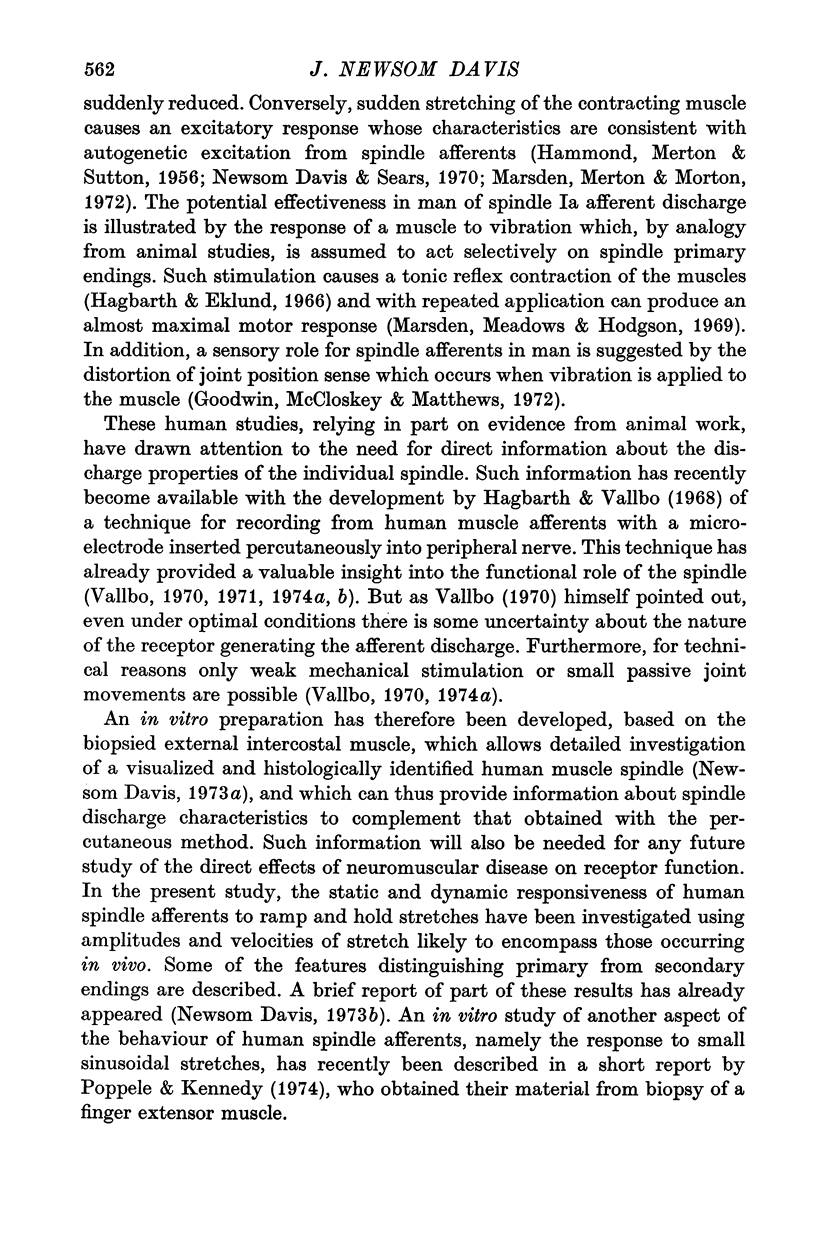
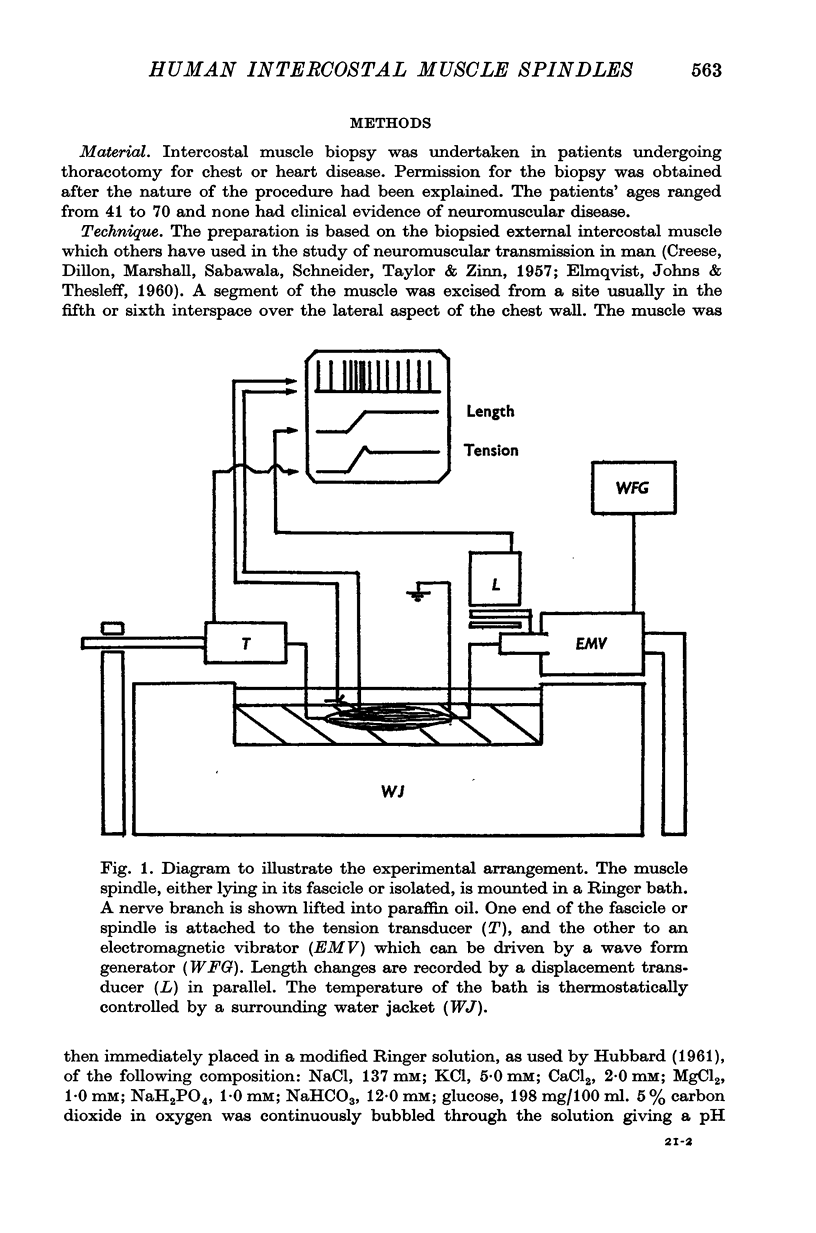
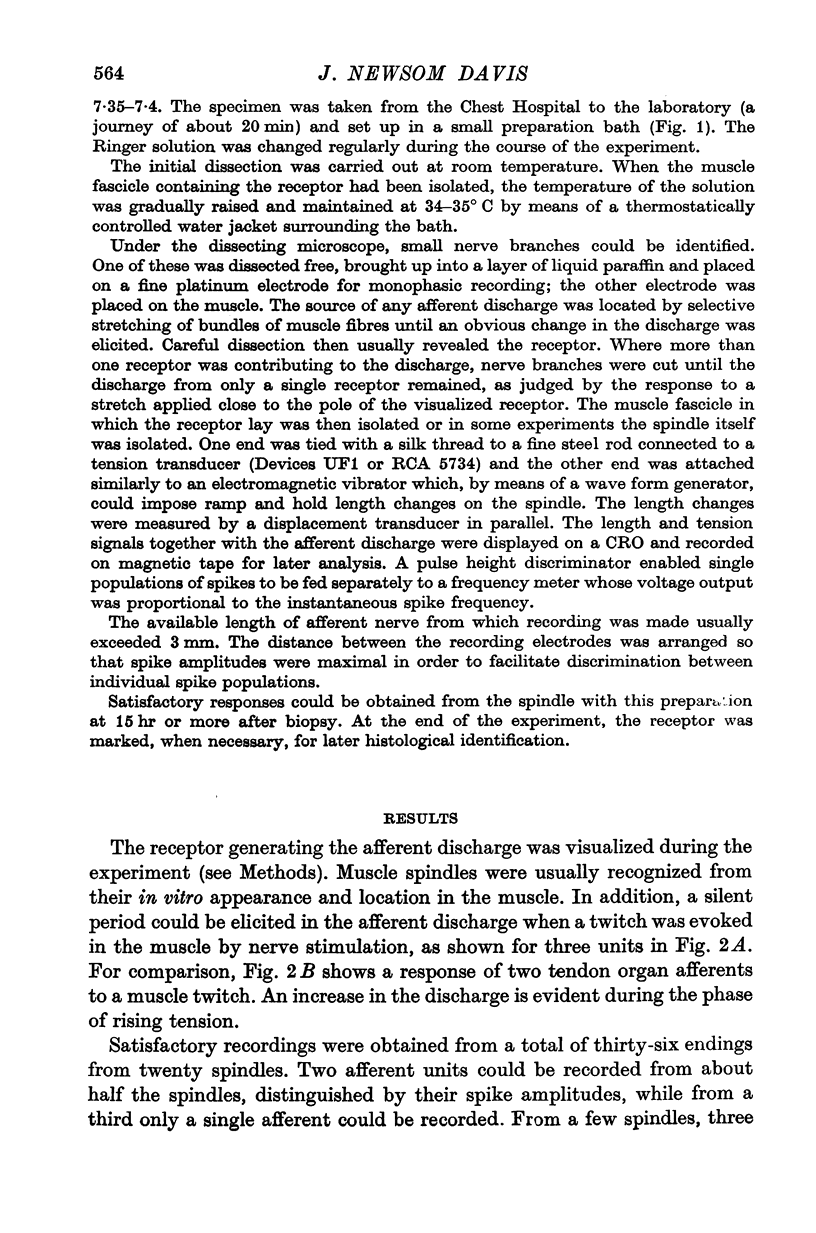
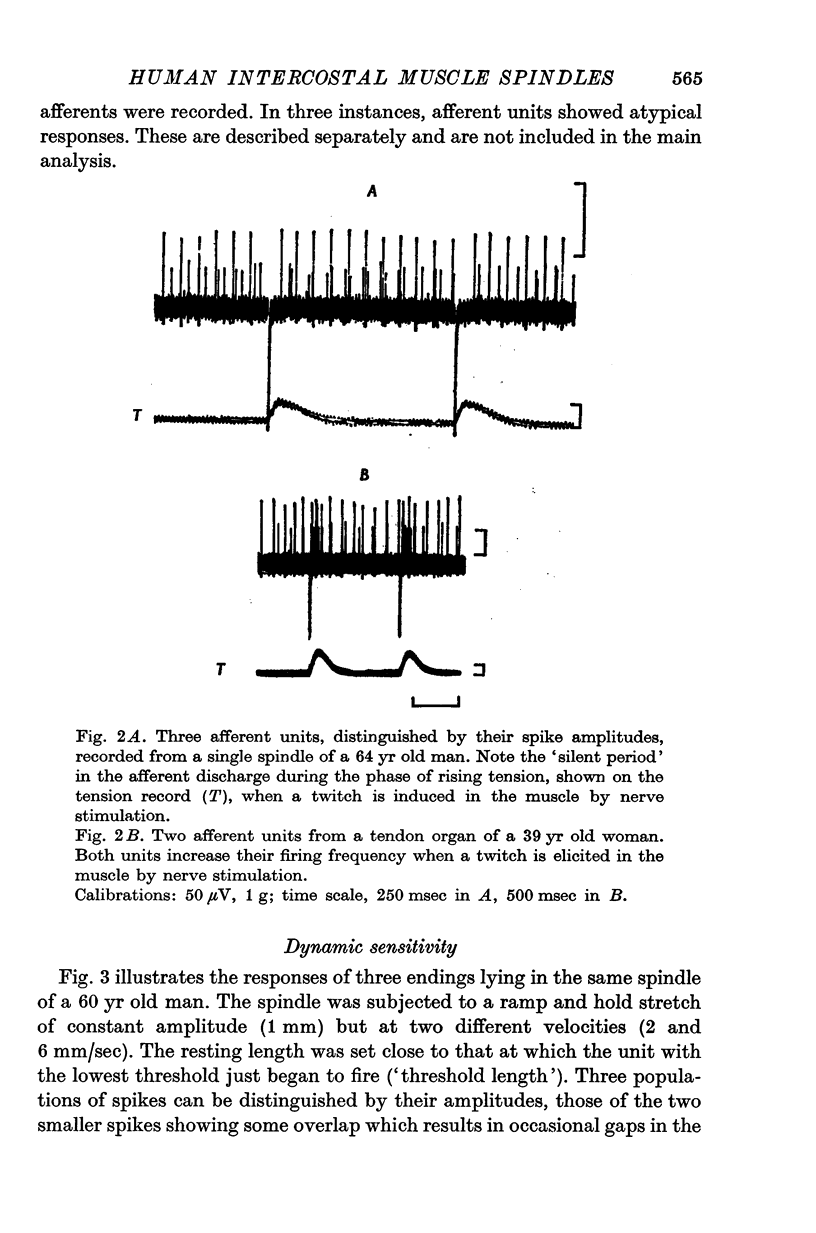
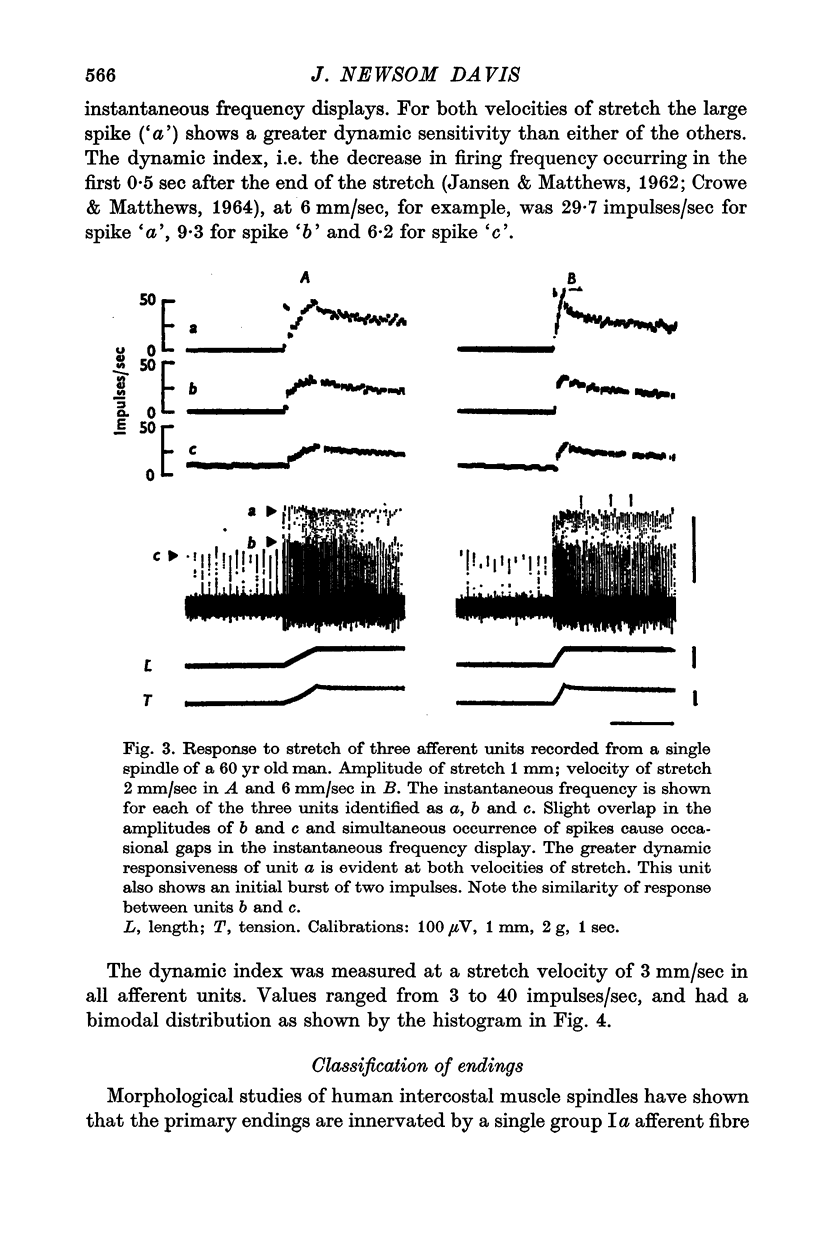
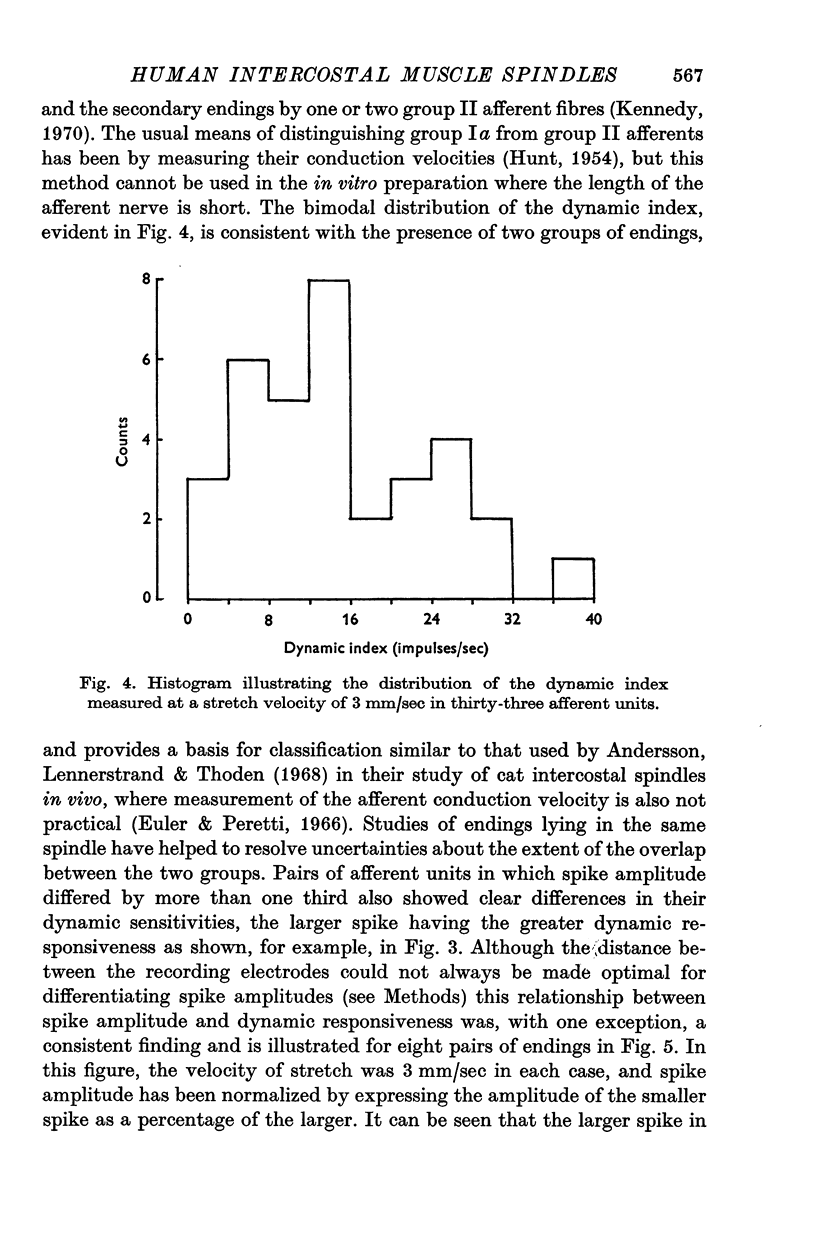
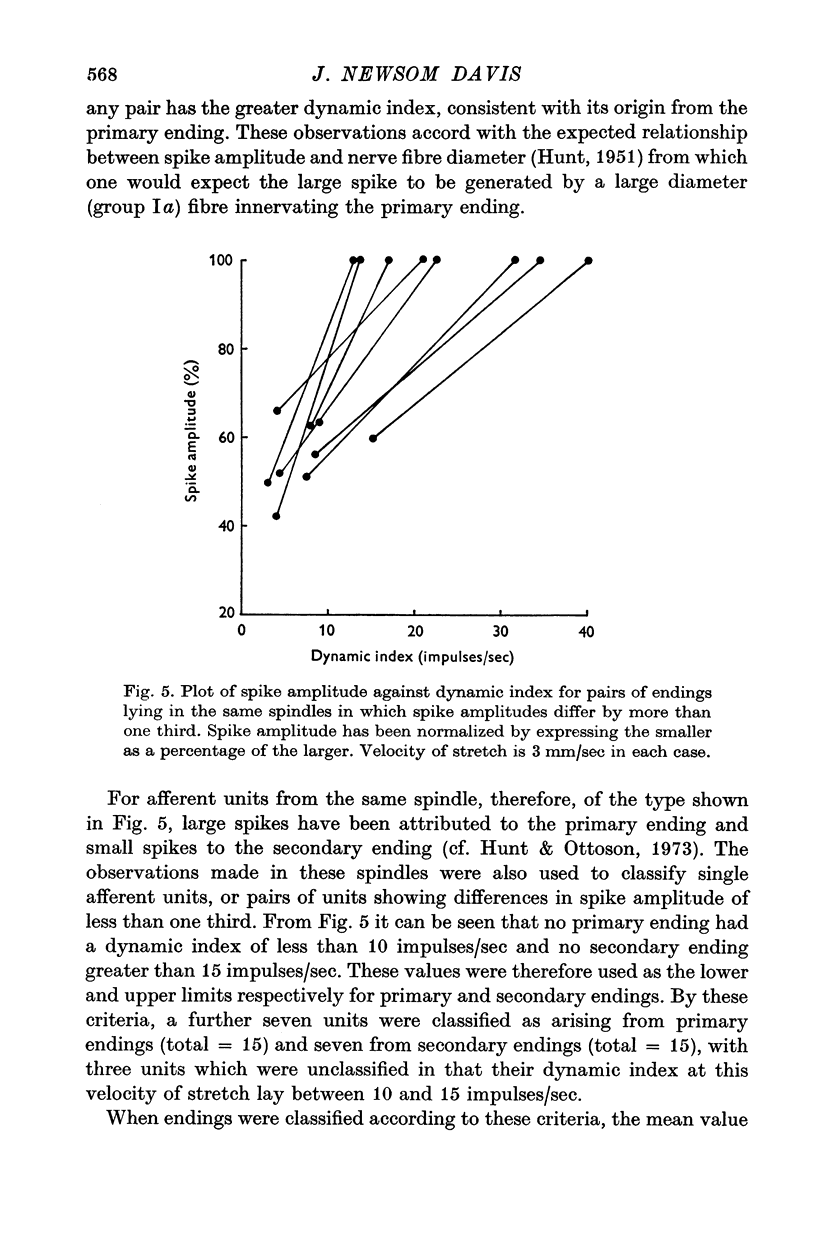
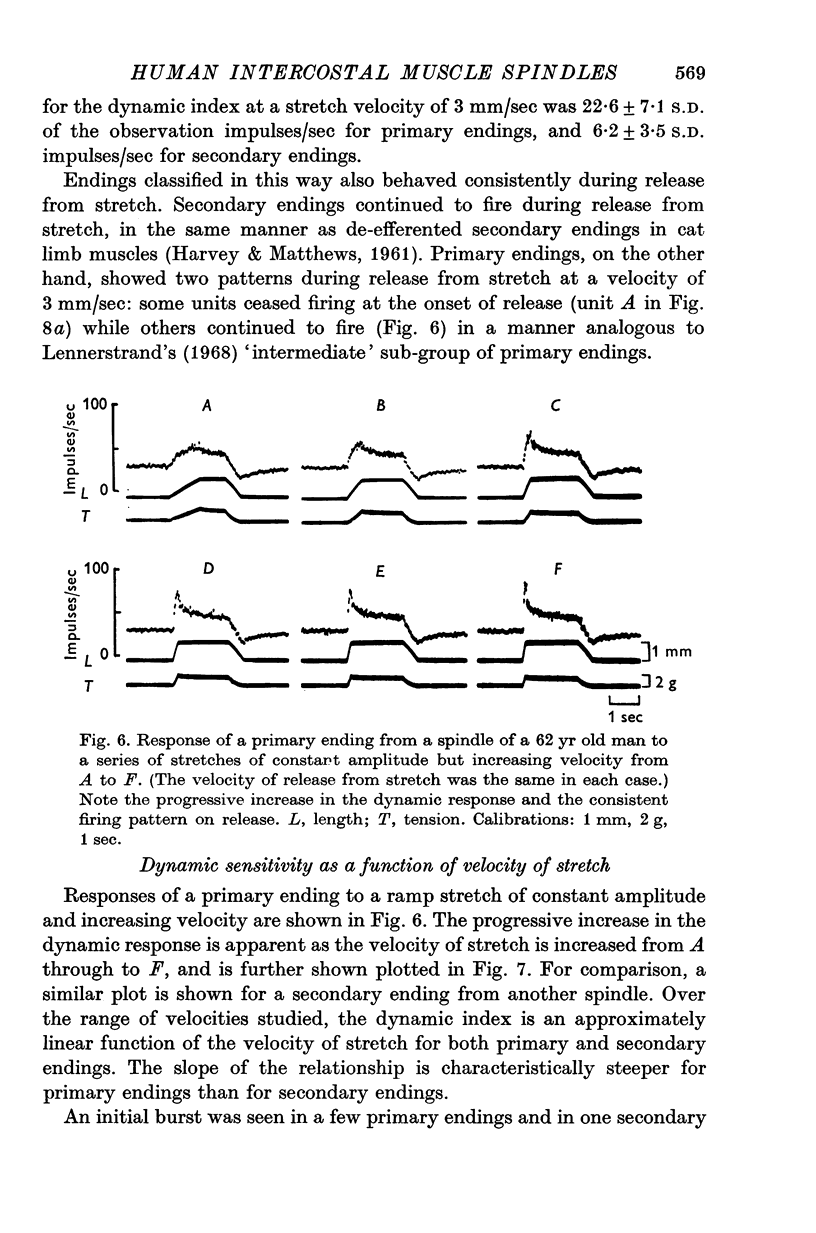
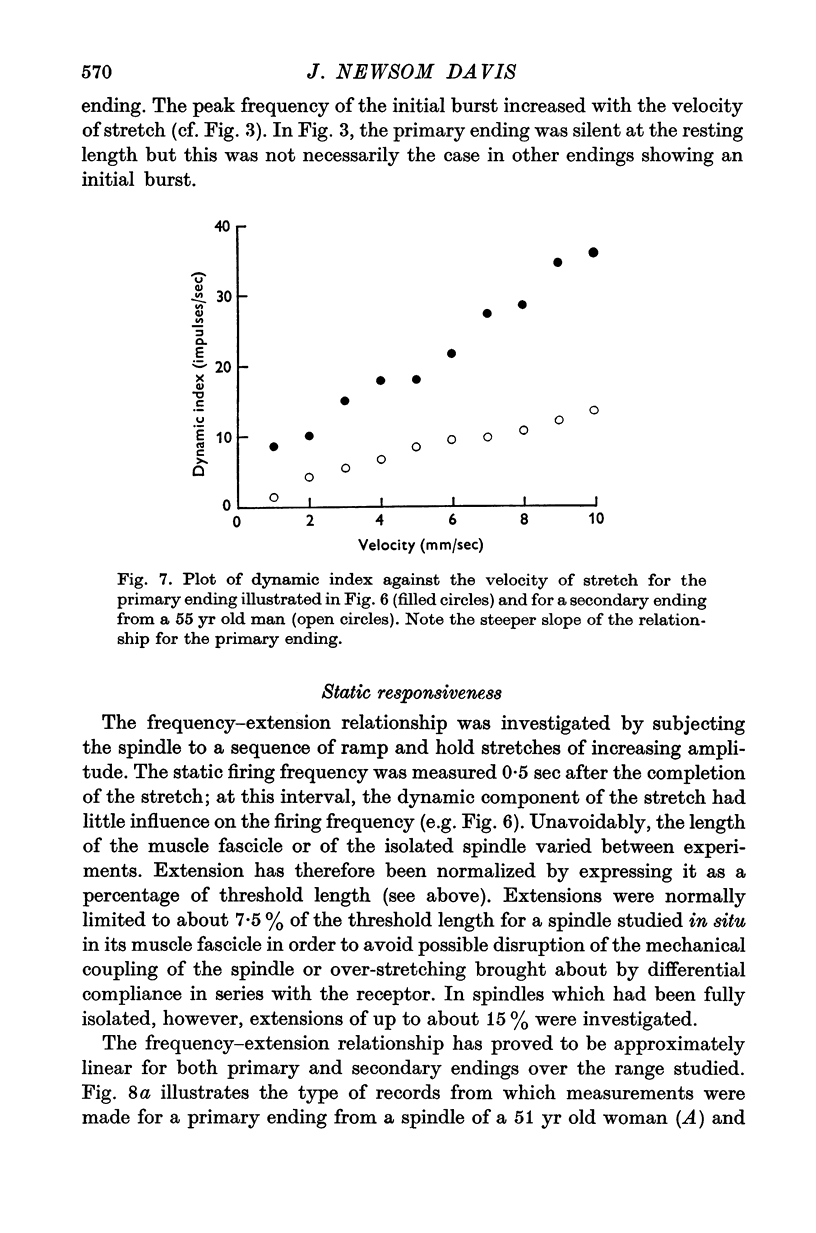
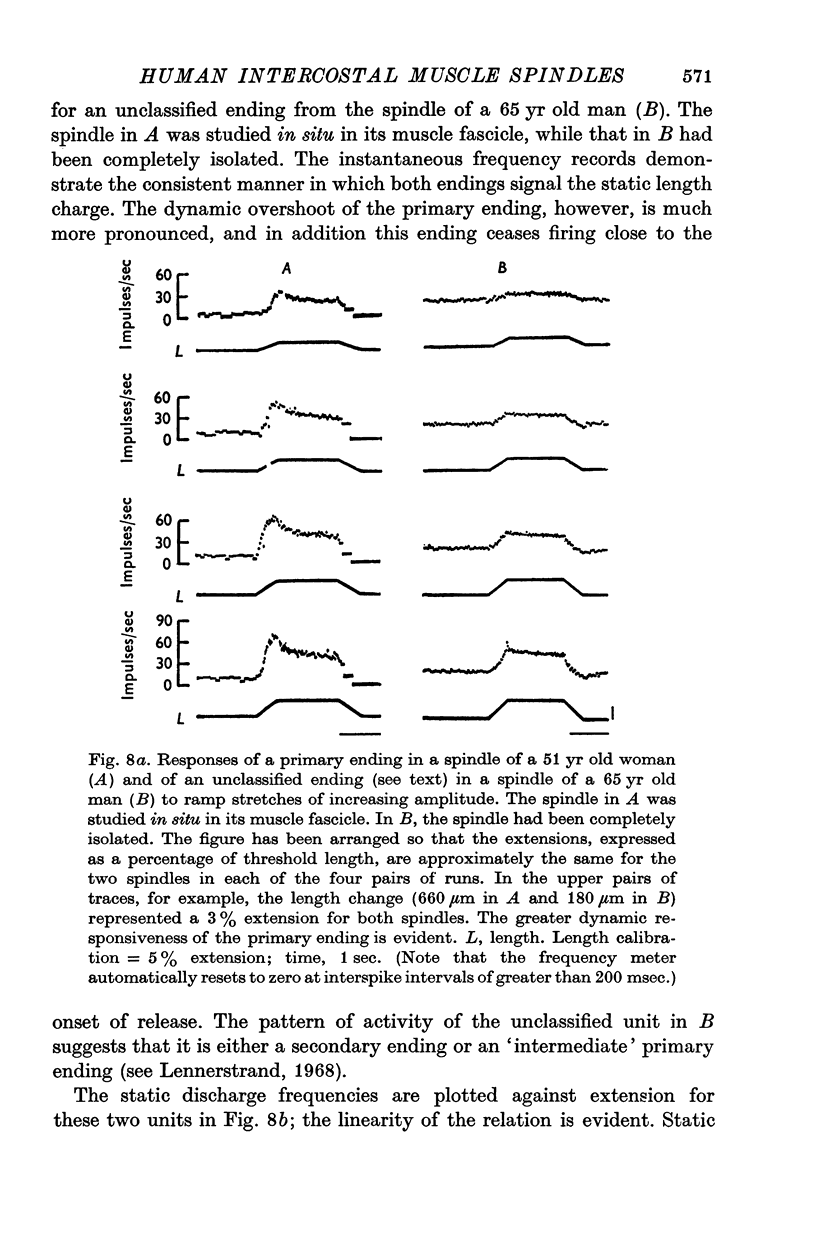
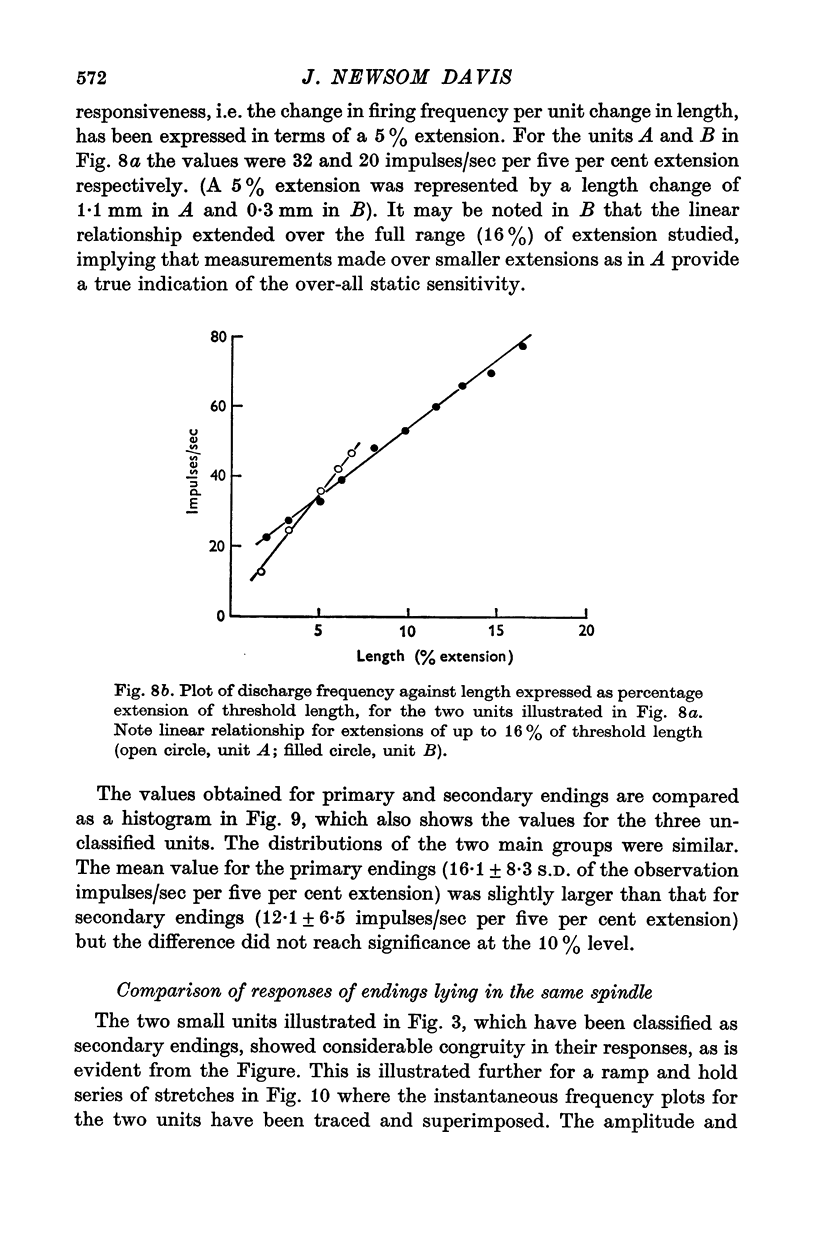
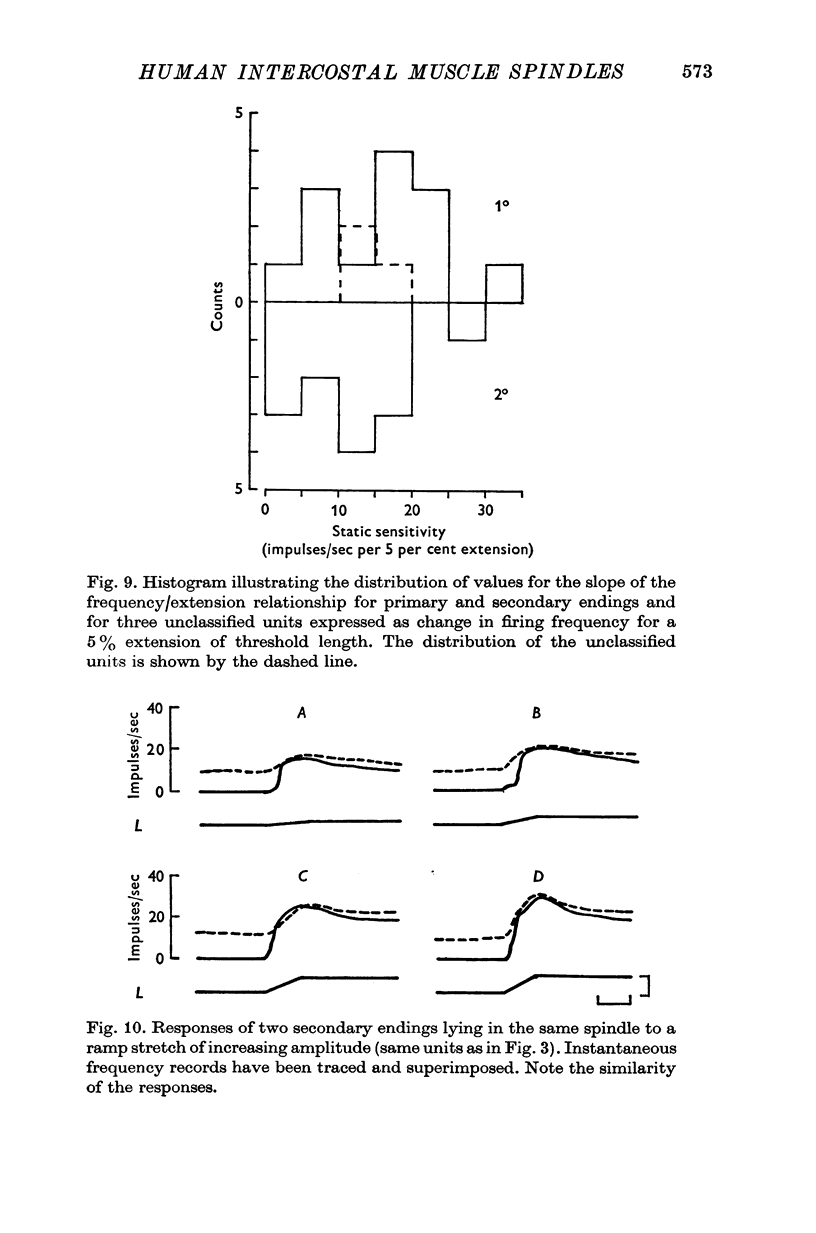
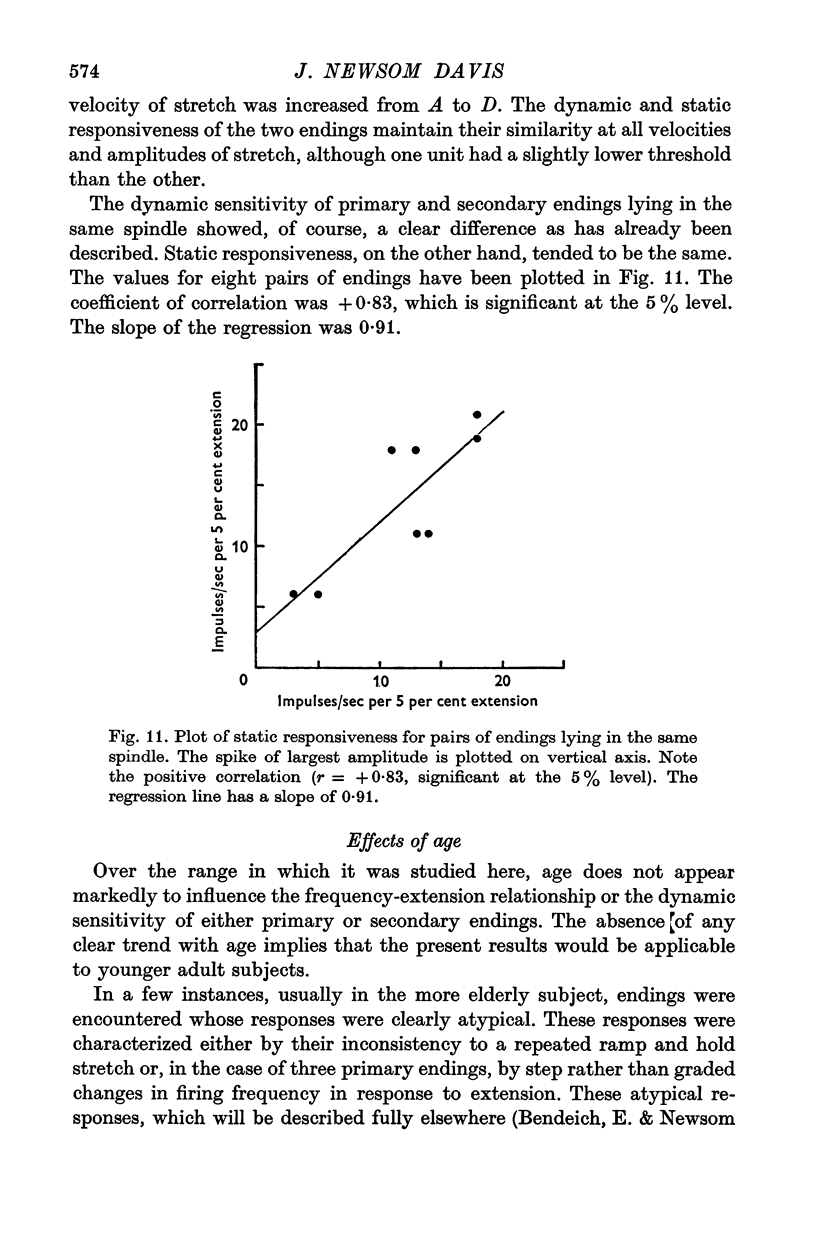
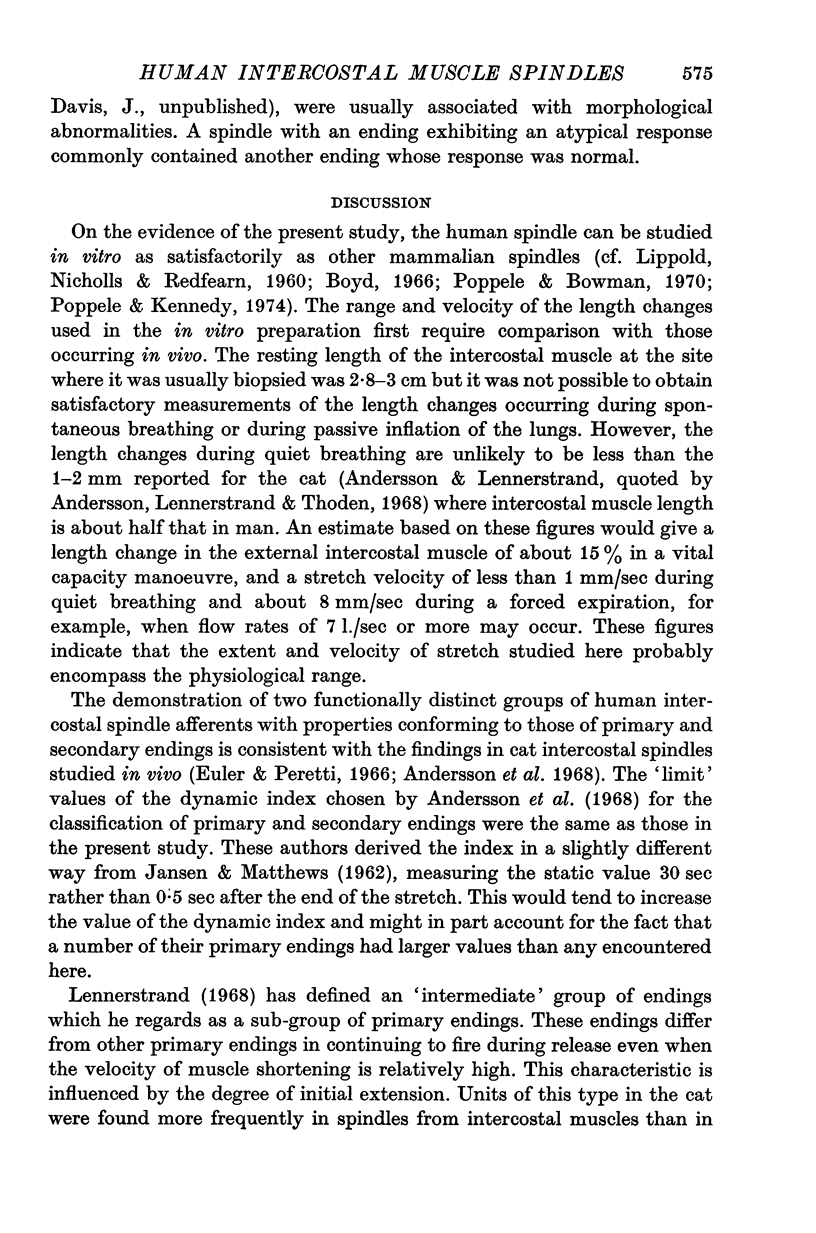
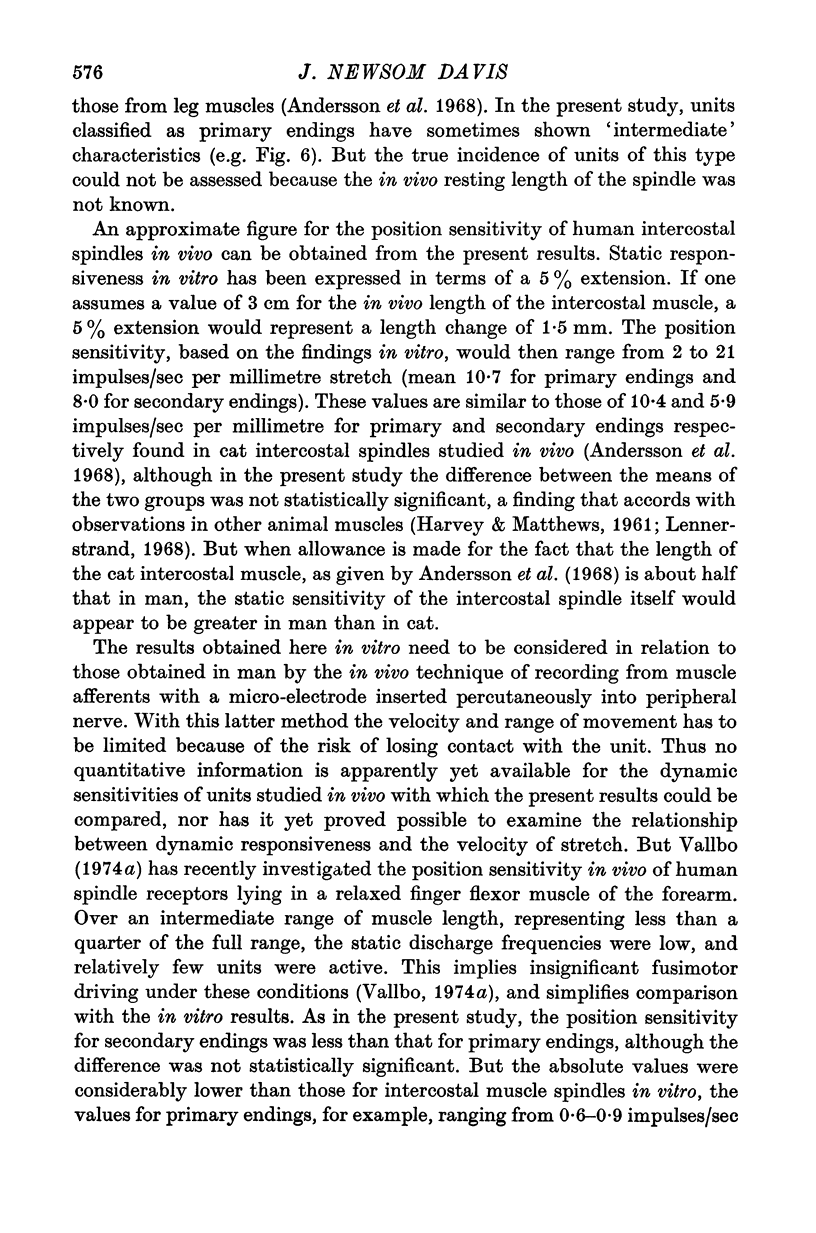
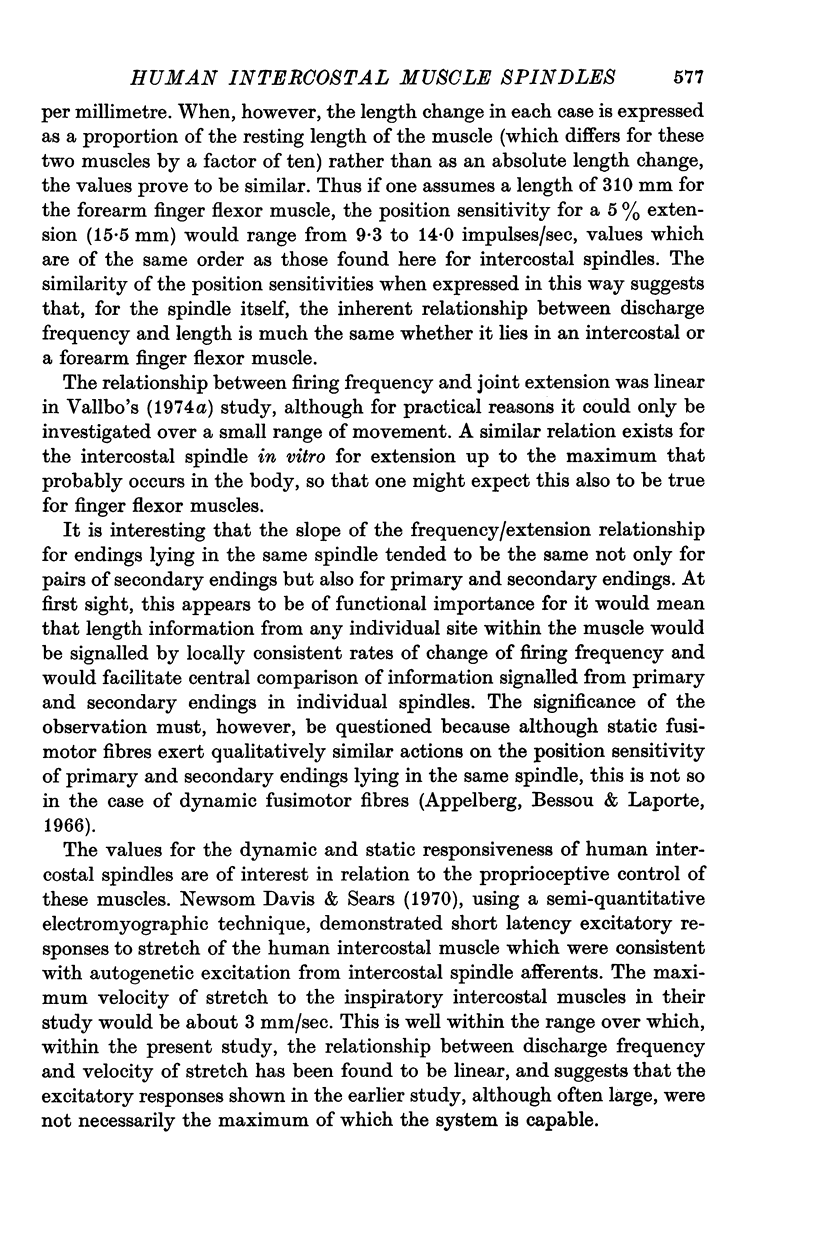
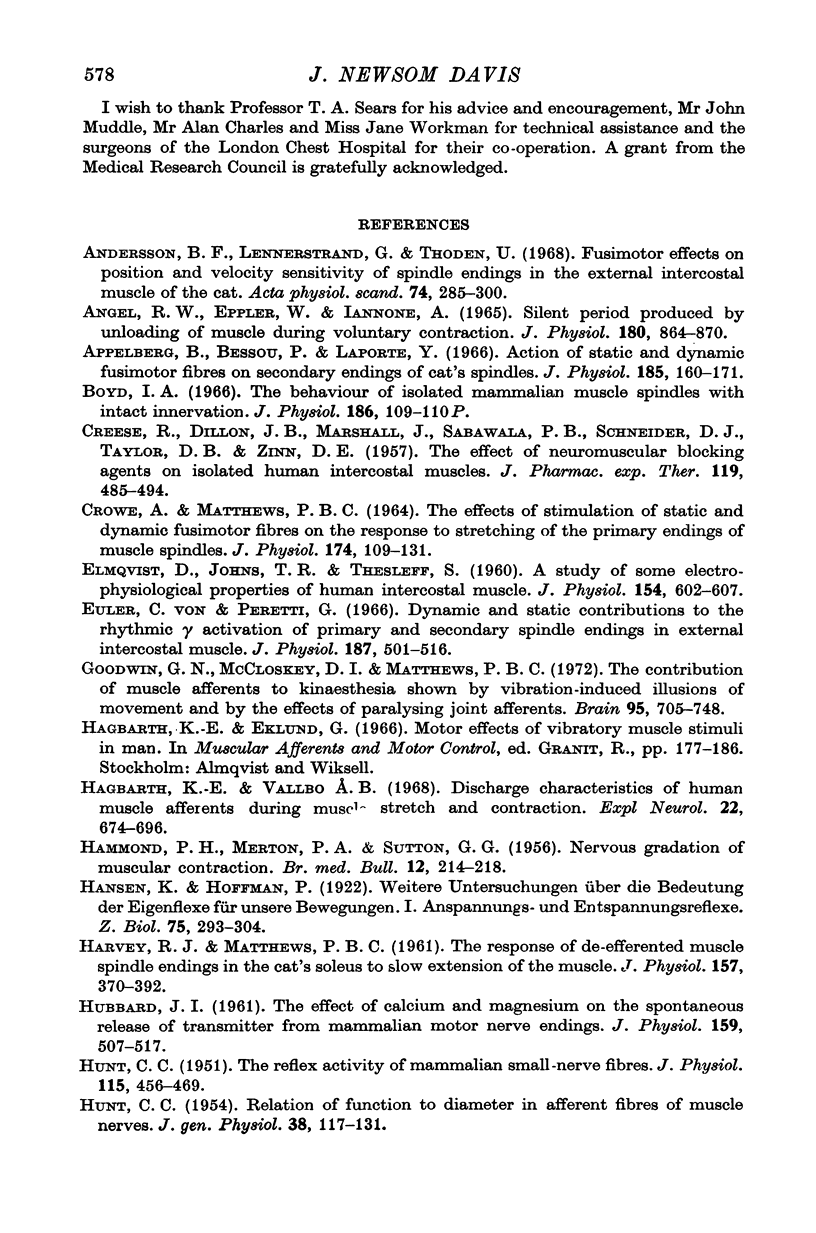
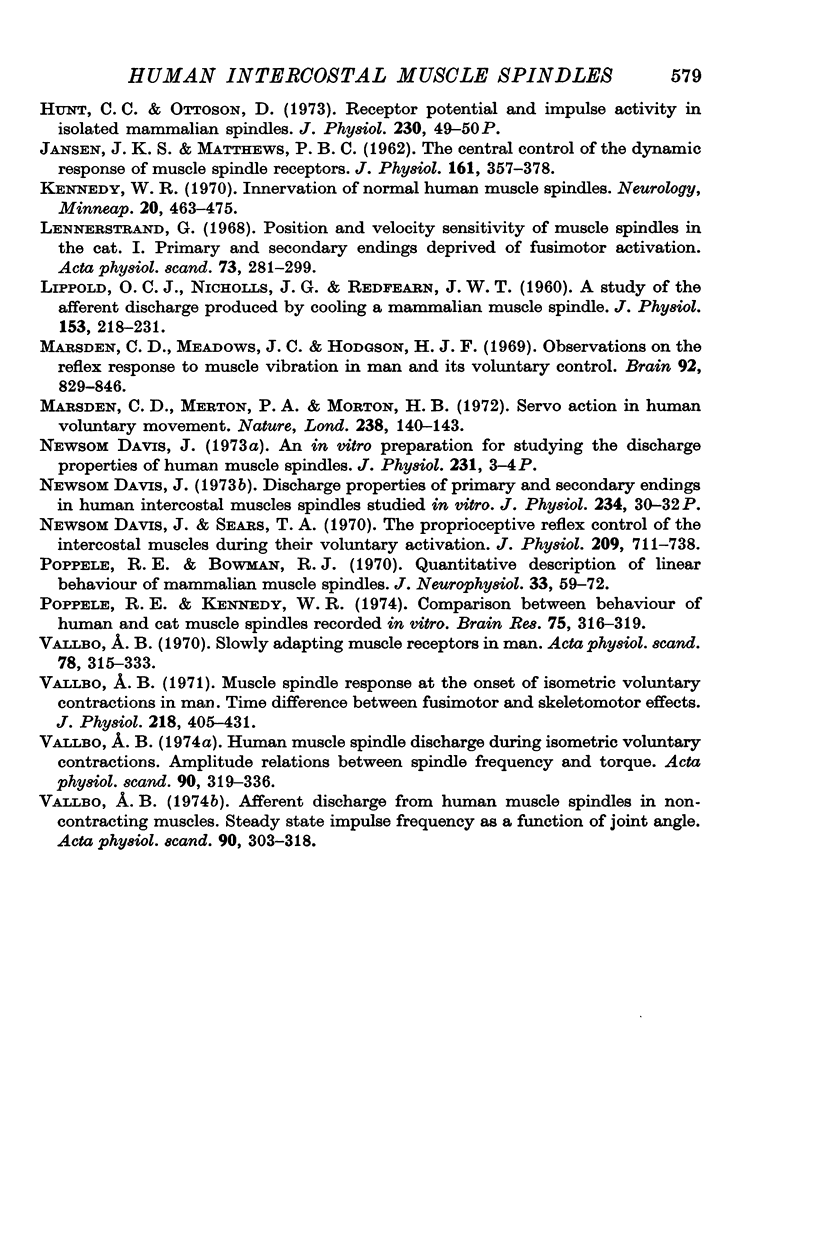
Selected References
These references are in PubMed. This may not be the complete list of references from this article.
- Andersson B. F., Lennerstrand G., Thoden U. Fusimotor effects on position and velocity sensitivity of spindle endings in the external intercostal muscles of the cat. Acta Physiol Scand. 1968 Nov;74(3):285–300. doi: 10.1111/j.1748-1716.1968.tb04237.x. [DOI] [PubMed] [Google Scholar]
- Angel R. W., Eppler W., Iannone A. Silent period produced by unloading of muscle during voluntary contraction. J Physiol. 1965 Oct;180(4):864–870. doi: 10.1113/jphysiol.1965.sp007736. [DOI] [PMC free article] [PubMed] [Google Scholar]
- Appelberg B., Bessou P., Laporte Y. Action of static and dynamic fusimotor fibres on secondary endings of cat's spindles. J Physiol. 1966 Jul;185(1):160–171. doi: 10.1113/jphysiol.1966.sp007978. [DOI] [PMC free article] [PubMed] [Google Scholar]
- CREESE R., DILLON J. B., MARSHALL J., SABAWALA P. B., SCHNEIDER D. J., TAYLOR D. B., ZINN D. E. The effect of neuromuscular blocking agents on isolated human intercostal muscles. J Pharmacol Exp Ther. 1957 Apr;119(4):485–494. [PubMed] [Google Scholar]
- CROWE A., MATTHEWS P. B. THE EFFECTS OF STIMULATION OF STATIC AND DYNAMIC FUSIMOTOR FIBRES ON THE RESPONSE TO STRETCHING OF THE PRIMARY ENDINGS OF MUSCLE SPINDLES. J Physiol. 1964 Oct;174:109–131. doi: 10.1113/jphysiol.1964.sp007476. [DOI] [PMC free article] [PubMed] [Google Scholar]
- Davis J. N., Sears T. A. The proprioceptive reflex control of the intercostal muscles during their voluntary activation. J Physiol. 1970 Aug;209(3):711–738. doi: 10.1113/jphysiol.1970.sp009188. [DOI] [PMC free article] [PubMed] [Google Scholar]
- ELMQVIST D., JOHNS T. R., THESLEFF S. A study of some electrophysiological properties of human intercostal muscle. J Physiol. 1960 Dec;154:602–607. doi: 10.1113/jphysiol.1960.sp006599. [DOI] [PMC free article] [PubMed] [Google Scholar]
- Goodwin G. M., McCloskey D. I., Matthews P. B. The contribution of muscle afferents to kinaesthesia shown by vibration induced illusions of movement and by the effects of paralysing joint afferents. Brain. 1972;95(4):705–748. doi: 10.1093/brain/95.4.705. [DOI] [PubMed] [Google Scholar]
- HAMMOND P. H., MERTON P. A., SUTTON G. G. Nervous gradation of muscular contraction. Br Med Bull. 1956 Sep;12(3):214–218. doi: 10.1093/oxfordjournals.bmb.a069553. [DOI] [PubMed] [Google Scholar]
- HARVEY R. J., MATTHEWS P. B. The response of de-efferented muscle spindle endings in the cat's soleus to slow extension of the muscle. J Physiol. 1961 Jul;157:370–392. doi: 10.1113/jphysiol.1961.sp006729. [DOI] [PMC free article] [PubMed] [Google Scholar]
- HUBBARD J. I. The effect of calcium and magnesium on the spontaneous release of transmitter from mammalian motor nerve endings. J Physiol. 1961 Dec;159:507–517. doi: 10.1113/jphysiol.1961.sp006824. [DOI] [PMC free article] [PubMed] [Google Scholar]
- HUNT C. C. Relation of function to diameter in afferent fibers of muscle nerves. J Gen Physiol. 1954 Sep 20;38(1):117–131. doi: 10.1085/jgp.38.1.117. [DOI] [PMC free article] [PubMed] [Google Scholar]
- HUNT C. C. The reflex activity of mammalian small-nerve fibres. J Physiol. 1951 Dec 28;115(4):456–469. doi: 10.1113/jphysiol.1951.sp004681. [DOI] [PMC free article] [PubMed] [Google Scholar]
- Hagbarth K. E., Vallbo A. B. Discharge characteristics of human muscle afferents during muscle stretch and contraction. Exp Neurol. 1968 Dec;22(4):674–694. doi: 10.1016/0014-4886(68)90156-8. [DOI] [PubMed] [Google Scholar]
- JANSEN J. K., MATTHEWS P. B. The central control of the dynamic response of muscle spindle receptors. J Physiol. 1962 May;161:357–378. doi: 10.1113/jphysiol.1962.sp006892. [DOI] [PMC free article] [PubMed] [Google Scholar]
- Kennedy W. R. Innervation of normal human muscle spindles. Neurology. 1970 May;20(5):463–475. doi: 10.1212/wnl.20.5.463. [DOI] [PubMed] [Google Scholar]
- LIPPOLD O. C., NICHOLLS J. G., REDFEARN J. W. A study of the afferent discharge produced by cooling a mammalian muscle spindle. J Physiol. 1960 Sep;153:218–231. doi: 10.1113/jphysiol.1960.sp006530. [DOI] [PMC free article] [PubMed] [Google Scholar]
- Lennerstrand G. Position and velocity sensitivity of muscle spindles in the cat. I. Primary and secondary endings deprived of fusimotor activation. Acta Physiol Scand. 1968 Jul;73(3):281–299. doi: 10.1111/j.1748-1716.1968.tb04106.x. [DOI] [PubMed] [Google Scholar]
- Marsden C. D., Meadows J. C., Hodgson H. J. Observations on the reflex response to muscle vibration in man and its voluntary control. Brain. 1969;92(4):829–846. doi: 10.1093/brain/92.4.829. [DOI] [PubMed] [Google Scholar]
- Marsden C. D., Merton P. A., Morton H. B. Servo action in human voluntary movement. Nature. 1972 Jul 21;238(5360):140–143. doi: 10.1038/238140a0. [DOI] [PubMed] [Google Scholar]
- Poppele R. E., Bowman R. J. Quantitative description of linear behavior of mammalian muscle spindles. J Neurophysiol. 1970 Jan;33(1):59–72. doi: 10.1152/jn.1970.33.1.59. [DOI] [PubMed] [Google Scholar]
- Poppele R. E., Kennedy W. R. Comparison between behavior of human and cat muscle spindles recorded in vitro. Brain Res. 1974 Jul 26;75(2):316–319. doi: 10.1016/0006-8993(74)90753-7. [DOI] [PubMed] [Google Scholar]
- Vallbo A. B. Afferent discharge from human muscle spindles in non-contracting muscles. Steady state impulse frequency as a function of joint angle. Acta Physiol Scand. 1974 Feb;90(2):303–318. doi: 10.1111/j.1748-1716.1974.tb05593.x. [DOI] [PubMed] [Google Scholar]
- Vallbo A. B. Human muscle spindle discharge during isometric voluntary contractions. Amplitude relations between spindle frequency and torque. Acta Physiol Scand. 1974 Feb;90(2):319–336. doi: 10.1111/j.1748-1716.1974.tb05594.x. [DOI] [PubMed] [Google Scholar]
- Vallbo A. B. Muscle spindle response at the onset of isometric voluntary contractions in man. Time difference between fusimotor and skeletomotor effects. J Physiol. 1971 Oct;218(2):405–431. doi: 10.1113/jphysiol.1971.sp009625. [DOI] [PMC free article] [PubMed] [Google Scholar]
- Vallbo A. B. Slowly adapting muscle receptors in man. Acta Physiol Scand. 1970 Mar;78(3):315–333. doi: 10.1111/j.1748-1716.1970.tb04667.x. [DOI] [PubMed] [Google Scholar]
- von Euler C., Peretti G. Dynamic and static contributions to the rhythmic y activation of primary and secondary spindle endings in external intercostal muscle. J Physiol. 1966 Dec;187(3):501–516. doi: 10.1113/jphysiol.1966.sp008106. [DOI] [PMC free article] [PubMed] [Google Scholar]


